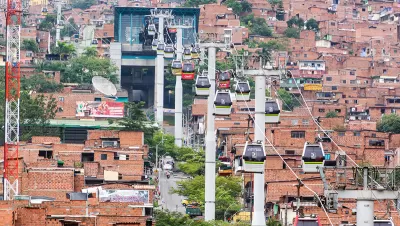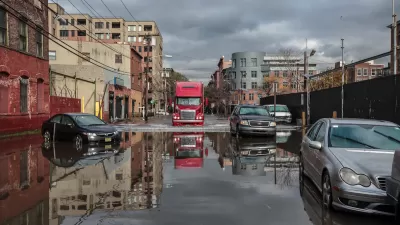Cultural institutions and heritage sites may contribute to a city’s social cohesion and attract investment.

A study from the World Bank suggests that preserving a city’s history can have a major impact on how that city recovers from traumas. "Investing in cultural institutions, spaces, and heritage can help build bridges between sparring communities in post-conflict urban areas and make disaster recovery quick, sustainable, and more effective," writes Tanvi Misra. By building on and preserving key cultural institutions, cities give citizens a way to cope with and grow from traumatic experiences.
The city of Medellin, Colombia, the site of great violence and upheaval during the Pablo Escobar era, provides a model of a resilient city, Misra argues. The city implemented a plan that included building libraries, and art space, along with other more obvious necessities. "The key is to balance the basic needs—shelter, food, and healthcare—with the effort to promote artistic expression that helps urban communities process trauma and communicate and document their experiences," Misra reports. The report emphasizes the idea that finding the right projects and making large impacts requires officials to work with community members to create a shared understanding about the most important aspects of local culture.
FULL STORY: The Secret Ingredient of Resilient Cities: Culture

Study: Maui’s Plan to Convert Vacation Rentals to Long-Term Housing Could Cause Nearly $1 Billion Economic Loss
The plan would reduce visitor accommodation by 25,% resulting in 1,900 jobs lost.

North Texas Transit Leaders Tout Benefits of TOD for Growing Region
At a summit focused on transit-oriented development, policymakers discussed how North Texas’ expanded light rail system can serve as a tool for economic growth.

Why Should We Subsidize Public Transportation?
Many public transit agencies face financial stress due to rising costs, declining fare revenue, and declining subsidies. Transit advocates must provide a strong business case for increasing public transit funding.

How to Make US Trains Faster
Changes to boarding platforms and a switch to electric trains could improve U.S. passenger rail service without the added cost of high-speed rail.

Columbia’s Revitalized ‘Loop’ Is a Hub for Local Entrepreneurs
A focus on small businesses is helping a commercial corridor in Columbia, Missouri thrive.

Invasive Insect Threatens Minnesota’s Ash Forests
The Emerald Ash Borer is a rapidly spreading invasive pest threatening Minnesota’s ash trees, and homeowners are encouraged to plant diverse replacement species, avoid moving ash firewood, and monitor for signs of infestation.
Urban Design for Planners 1: Software Tools
This six-course series explores essential urban design concepts using open source software and equips planners with the tools they need to participate fully in the urban design process.
Planning for Universal Design
Learn the tools for implementing Universal Design in planning regulations.
City of Santa Clarita
Ascent Environmental
Institute for Housing and Urban Development Studies (IHS)
City of Grandview
Harvard GSD Executive Education
Toledo-Lucas County Plan Commissions
Salt Lake City
NYU Wagner Graduate School of Public Service




























